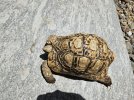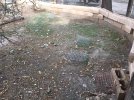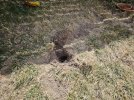Hello,
I believe my Leopard is getting ready to lay eggs, and I am working to prepare to incubate them. Do I need to do anything other than collect them as ive read and put them in the incubator? I am not sure if I need to leave them at room temp or not for awhile. This is my first time having eggs.
She started doing this yesterday, then got interrupted or gave up. I've loosened some ground all around her enclosure and she is alone. She is outdoors all the time.
Here is a video and photo of her. Thank you!!

I believe my Leopard is getting ready to lay eggs, and I am working to prepare to incubate them. Do I need to do anything other than collect them as ive read and put them in the incubator? I am not sure if I need to leave them at room temp or not for awhile. This is my first time having eggs.
She started doing this yesterday, then got interrupted or gave up. I've loosened some ground all around her enclosure and she is alone. She is outdoors all the time.
Here is a video and photo of her. Thank you!!





